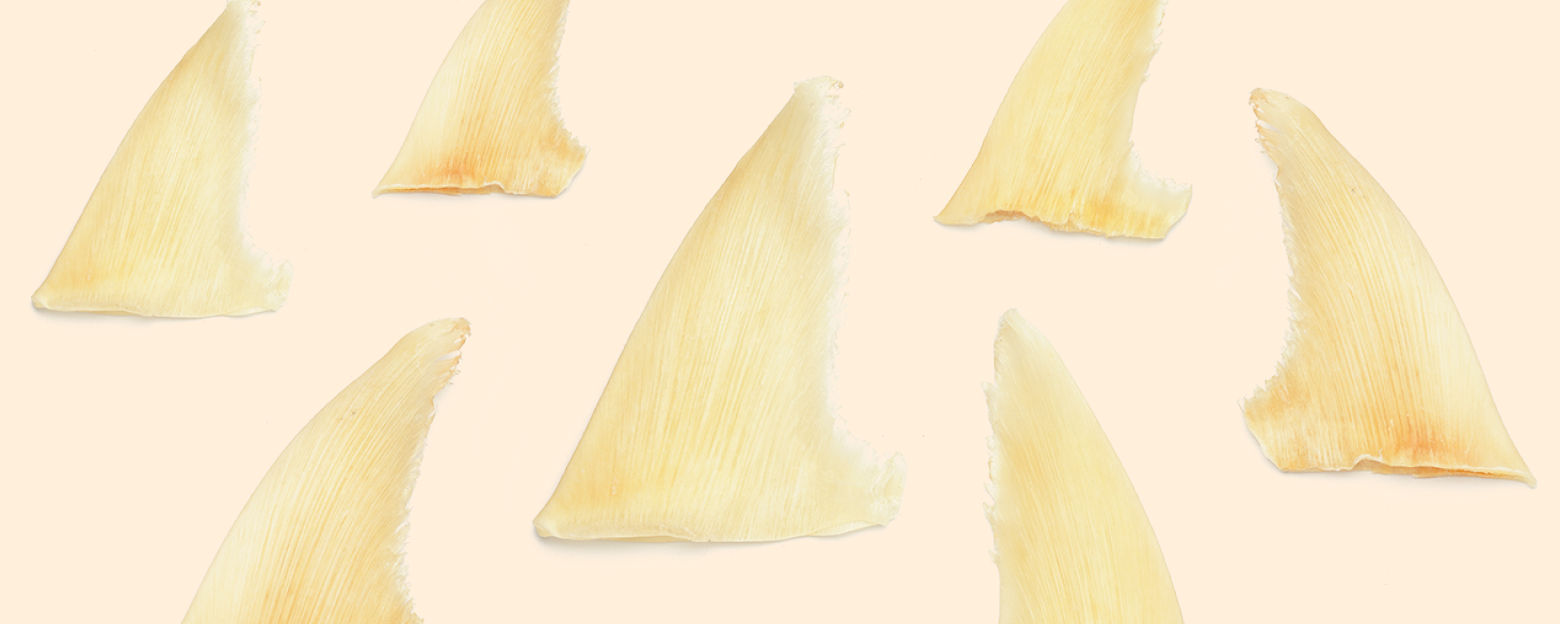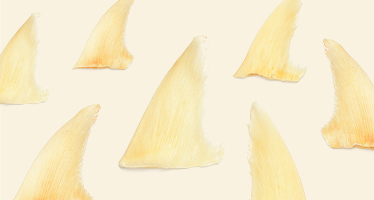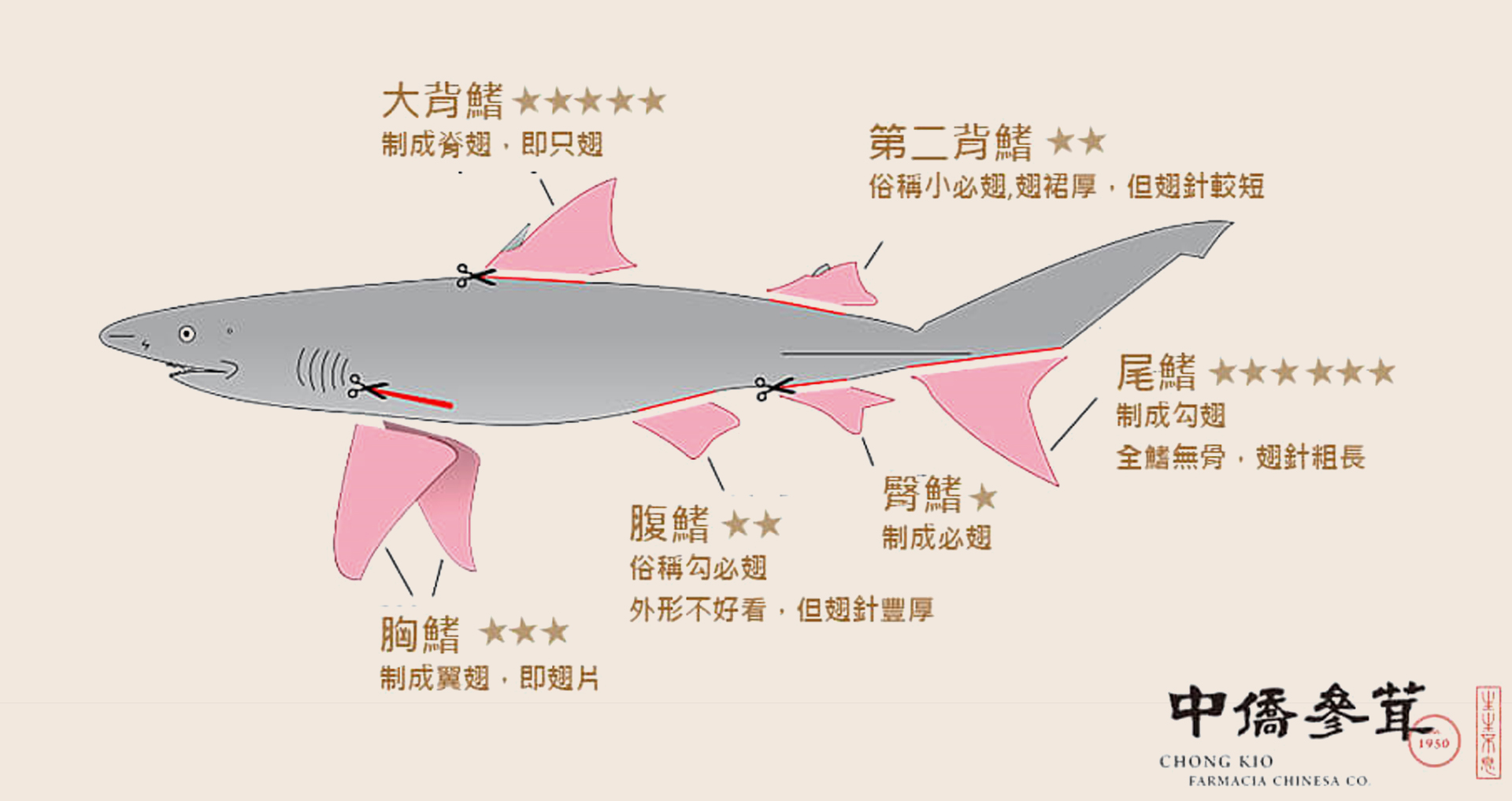
Shark fins, the dorsal fins of sharks, belong to a group of ancient creatures that have existed for 350-400 million years, encompassing roughly 359 known species. In Chinese cuisine, shark fins hold a traditional and esteemed status, recognized as one of the "Eight Treasures of the Sea." The consumption of shark fins can be traced back to ancient times, with the earliest documented reference found in the Song dynasty's text "Song Huiyao." During the Ming dynasty, their popularity grew significantly, highlighted in Li izhen's "Compendium of Materia Medica," which praised shark fins for their rich flavor and various benefits such as tonifying the kidneys, enhancing skin complexion, and nourishing the marrow. arks fins have maintained a longstanding reputation as a luxurious and nutritious delicacy within Chinese culinary traditions.
Shark fins are classified based on the shark species and the particular section of the fin utilized. Variations in the amount of cartilage and bone present in different fin components lead to distinctions in texture, taste, and overall desirability. Among the various types of shark fins, the most coveted is the fin obtained from the tail or caudal fin, commonly referred to as the "hookfin" or "lower back fin." Hookfins are highly sought after due to their composition of thick, lengthy cartilage spines without any bony structures, resulting in a premium texture and quality that surpasses other fin segments.

Neutral

Spleen

Sweet

Salty
Enhance hematopoietic ability for vitality, collagen supplementation.
| . | Enhancing Hematopoiesis Shark fins contain a high concentration of iron, up to 40 mg per gram of the product. The significant iron content in shark fins can effectively improve the efficiency of the body's hematopoiesis, or blood cell production. This increased blood cell production helps enhance the body's ability to transport nutrients and remove waste more effectively through the bloodstream and can help reduce blood lipid levels.
|
| . | Anti-atherosclerotic Benefits Shark fins contain a variety of essential micronutrients, including manganese. The manganese present in shark fins can help improve lipid (fat) metabolism in the human body. This helps maintain a balanced lipid profile and prevents an unhealthy buildup of fats. Importantly, the manganese in shark fins also has a vasodilatory effect, meaning it can help soften and relax blood vessels.
|
| . | Replenish Collagen Shark fin is rich in collagen, which can replenish the loss of collagen in the lower layers of the skin due to aging and environmental changes, and keep the skin moisturized.
|

Shark fin consumption is banned or restricted in certain countries and cities due to concerns over sustainability and animal welfare. There are instances where sharks are caught solely for their fins, and the rest of the shark's body is then discarded back into the water. This practice, known as "shark finning," has significantly damaged the reputation of the shark fin industry.
Aside from their fins, sharks have other valuable components, such as shark liver oil. Shark liver oil contains high amounts of squalene, a saturated fatty alcohol that is a potent antioxidant. Squalene from shark liver oil is a commonly used ingredient in skincare and cosmetic products due to its beneficial properties for skin health. While squalene can also be derived from plant sources, obtaining it from shark liver oil is considered more economically viable. Beyond cosmetics, shark liver oil is also utilized as an ingredient in vitamin supplements and other health products.

01 Shark fishing vessels will use a variety of different fish species connected in a string, with floats attached, that they tow behind the boat in the ocean. This setup is designed to mimic the movement and appearance of a natural schooling of fish in the wild. The goal is to use this simulated fish group to lure and entice sharks to bite onto the hooks that are part of the setup. By creating this lifelike representation of a fish school, the shark fishing boats are able to more effectively attract and catch sharks.

02 Shark fishing vessels will often spend multiple days out at sea before returning to port. The fishing lines and hooks used to catch the sharks can extend for hundreds of meters in length, mechanical assistance is required to successfully pull the catch back onto the boat.
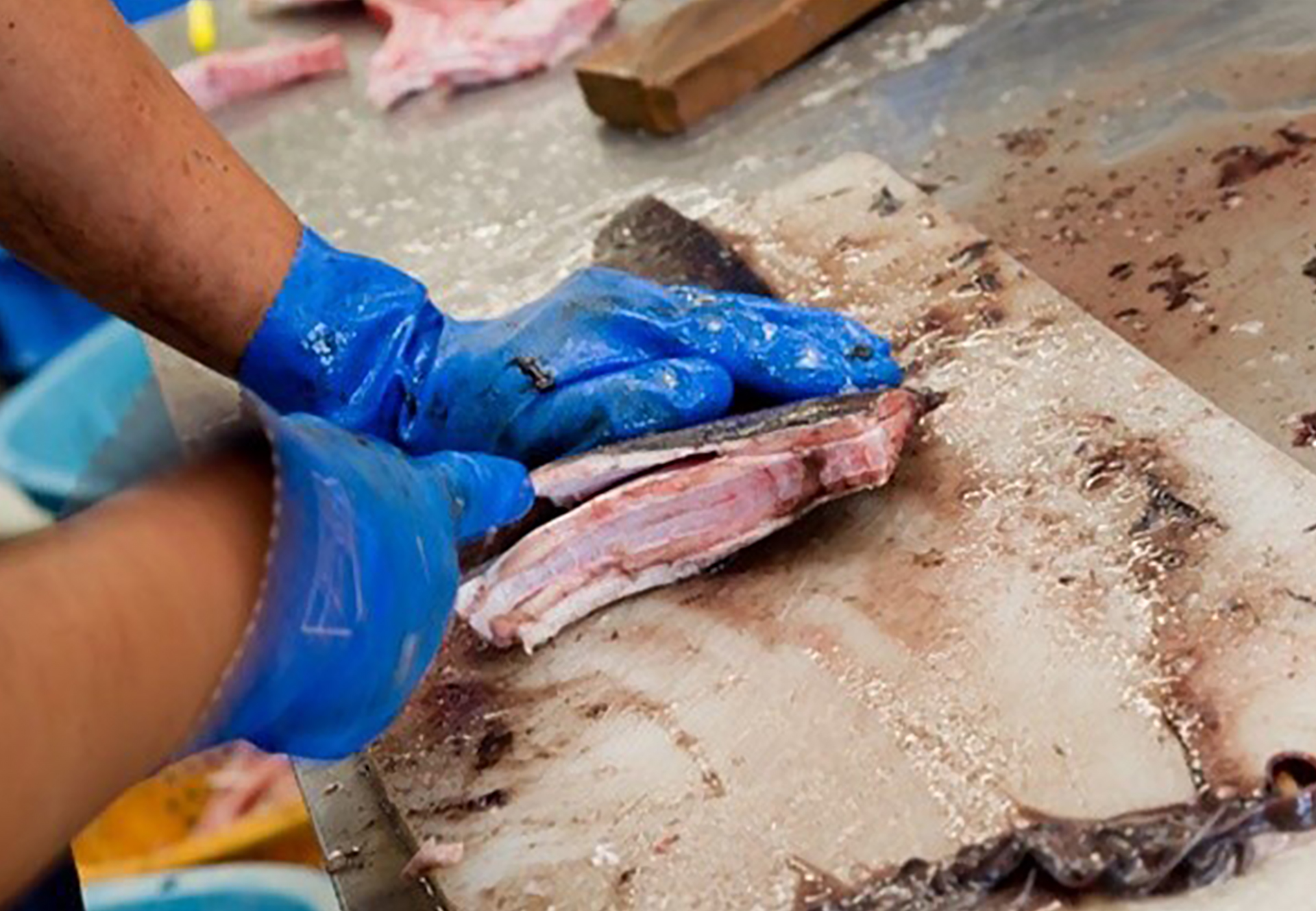
03 After the sharks are caught, the fins are first washed with clean water. They are then heated, likely to help soften the fins. Next, the fishermen or processors will use small knives to carefully scrape and remove any sand or grit particles that may be adhering to the shark fins. This specific step is referred to within the industry as "scraping the sand."
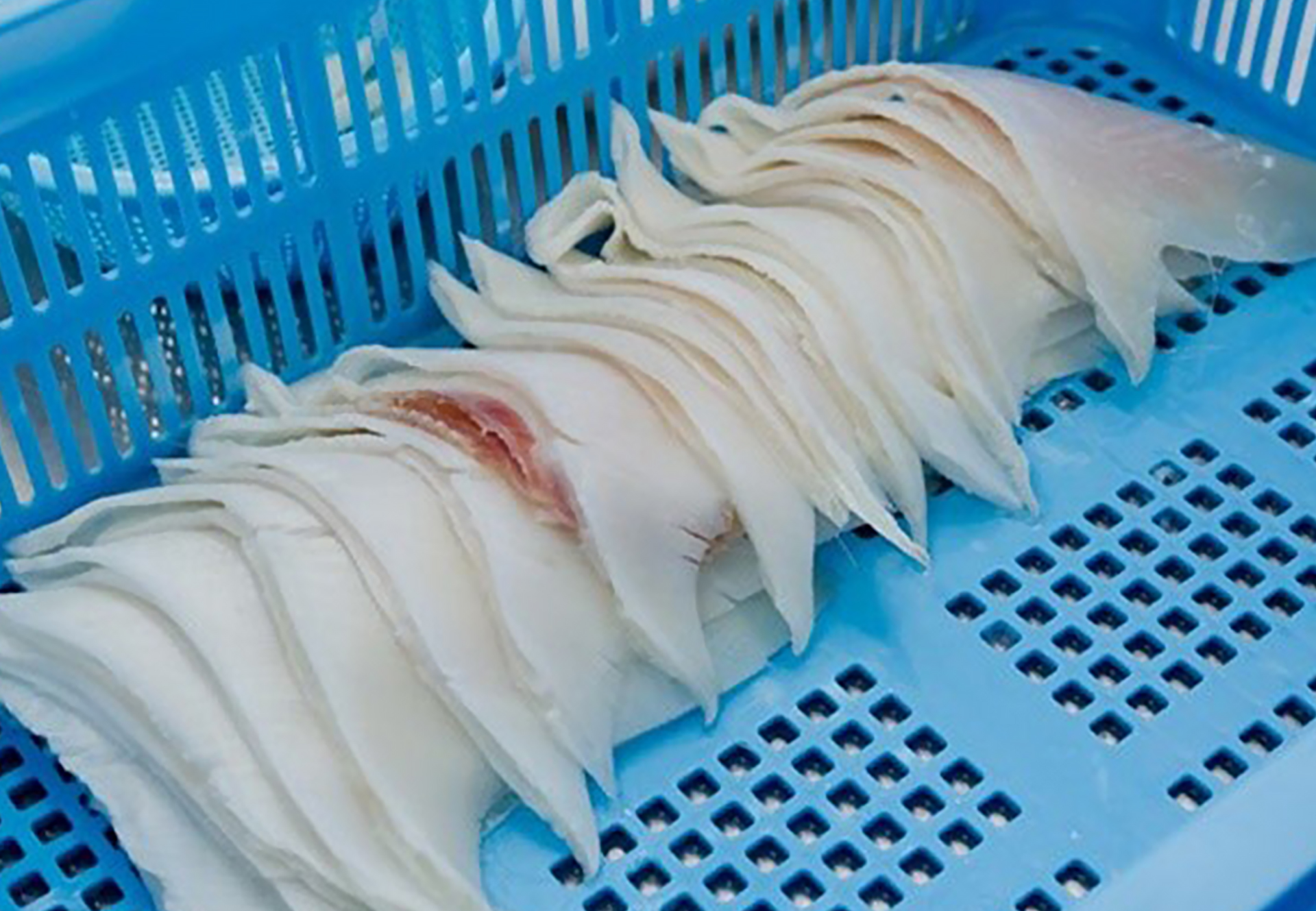
04 The workers will use deboning knives to carefully extract and remove the soft cartilage that makes up the central core of the shark fins.

05 The processed shark fins are placed in a drying room or oven and subjected to low-temperature drying. This drying process is carefully controlled to reduce the moisture content of the finished shark fin product to 10% or less.
